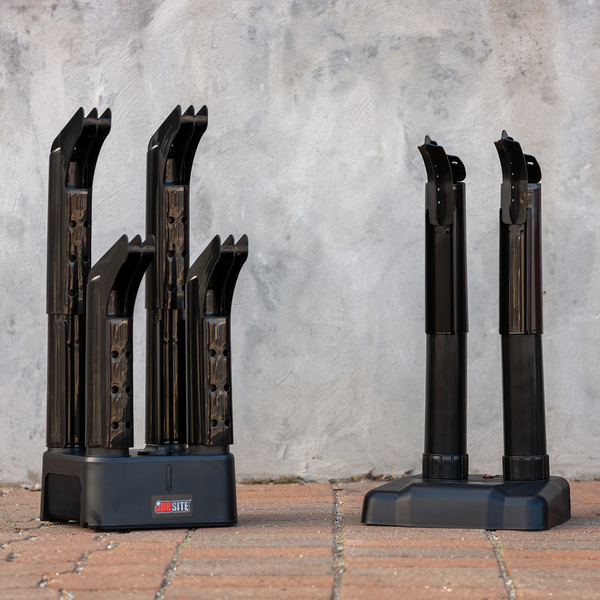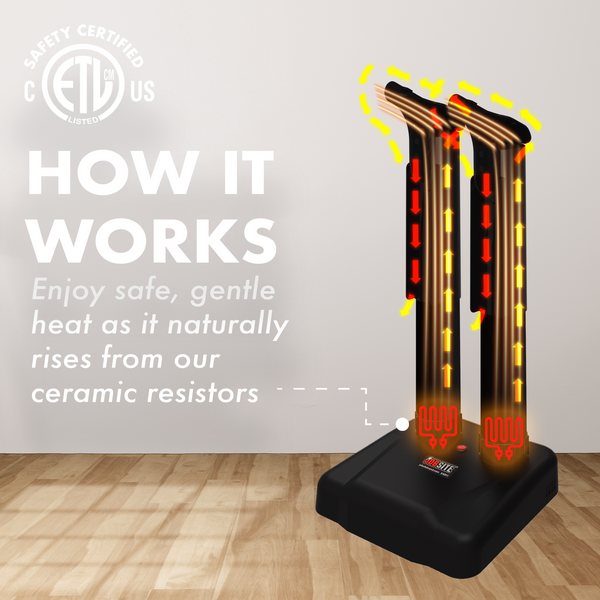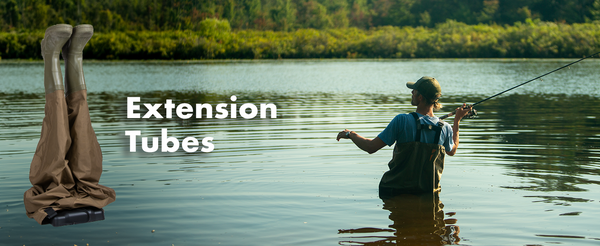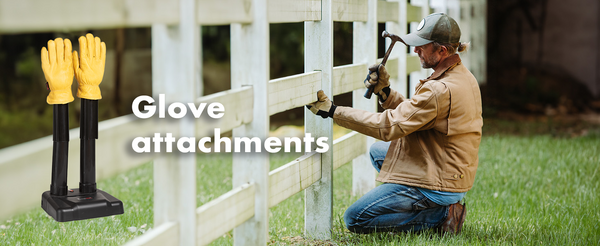Are boot dryers any good?

Are boot dryers any good?
Boot dryers have gained popularity as a reliable solution for maintaining dry, comfortable, odor-free footwear. Whether you're an outdoor enthusiast, an outdoor worker, or just someone who wants to take care of their boots, boot dryers offer numerous benefits. By removing moisture and preventing mold, mildew, fungus, and bacteria growth, boot dryers ensure comfortable, fresh-smelling footwear that lasts longer.
Key Takeaways:
- Boot dryers remove sweat and moisture from boots and shoes to make them warm and comfortable
- Boot dryers prevent the growth of mold and bacteria, deodorizing bad odors.
- Boot dryers extend the lifespan of boots by preventing mold & fungal growth
- Boot dryers can also be used to dry gloves, snow gear, cleats, socks, and other sports equipment.
- It is important to choose the right boot dryer for your needs, considering factors such as drying capacity, dry time, and size.

The Essentials of Boot Dryers
When it comes to keeping your footwear in top condition, boot dryers are an essential tool. Understanding how boot dryers work, their common uses, and their benefits for footwear hygiene is crucial for anyone looking to maintain dry and comfortable boots and shoes.
Understanding How Boot Dryers Work
Moisture, like sweat and water, evaporate faster when the temperature, humidity, and ventilation are higher. There are basically two types of boot dryers: convection boot dryers & forced air boot dryers.
-
Convection Boot Dryers - Convection boot dryers work using only heat to
dry boots. The heating element, usually ceramic resistors, generates a gentle warm heat that causes sweat and moisture to evaporate and dry the boots slowly overnight. The gentle heat prevents over-drying, which is especially a concern with genuine leather boots that can dry out and crack. -
Forced Air Boot Dryers - Forced air boot dryers work by blowing air into boots and shoes, effectively removing moisture and accelerating the drying process. Some forced air boot dryers warm the air, others have an option to turn the heat off so it only uses forced air to dry. A good forced air boot dryer will use low heat and have a timer dial, to ensure that your boots and shoes are dried thoroughly and safely, without overdrying.

Boot Dryers and Footwear Hygiene: Combating Odor and Bacteria
One of the key benefits of boot dryers is their ability to combat odor and prevent the growth of bacteria, mold, and mildew. A boot dryer also acts as a boot deodorizer by effectively warming and ventilating boots so the moisture evaporates. Better ventilation and lower humidity remove the environment in which odor-causing bacteria thrive. This not only keeps your boots and shoes fresh and pleasant smelling but also ensures proper hygiene and extends the life of your footwear. Whether you use them for work boots or sports equipment, boot dryers help maintain the cleanliness and freshness of your footwear.
With their efficient drying capabilities and versatile use, boot dryers are a must-have tool for anyone looking to maintain dry, odor-free, and hygienic footwear.

Assessing the Effectiveness of Boot Dryers
There are several factors that need to be considered when evaluating boot dryers.
The first factor to consider is the level of moisture in the footwear. Boot dryers are more effective at removing moisture when the boots or shoes are only slightly damp. If the footwear is excessively wet, it may take longer for the boot dryer to completely dry them. In such cases, it is recommended to remove any excess water and allow the boots or shoes to air dry partially before using the boot dryer.
The material of the footwear also plays a crucial role in determining the effectiveness of boot dryers. Different materials have varying levels of water absorption and drying capabilities. For example, leather boots may take longer to dry compared to synthetic materials. It is important to choose a boot dryer that is suitable for the specific material of your footwear.
Moreover, the specific characteristics of the boot dryer itself can influence its effectiveness. Factors such as drying time, capacity, and features like heat settings and airflow can impact how efficiently a boot dryer removes moisture. A boot dryer with a faster drying time and higher capacity may be more effective for individuals who frequently need to dry their boots or shoes, especially in humid or wet conditions.
To evaluate the effectiveness of boot dryers, it is recommended to consider these factors and choose a boot dryer that aligns with your specific needs and requirements. By selecting the right boot dryer, you can ensure that your footwear is thoroughly dried, preventing the growth of bacteria, mold, and mildew, and extending the lifespan of your boots or shoes.
Choosing the Right Boot Dryer for Your Needs
Factors to Consider When Purchasing a Boots Dryer
When selecting a boot dryer, it's essential to take several factors into consideration to ensure you choose the right one for your needs. Here are some key factors to keep in mind:
- Drying Capacity: Consider the number of boots or gloves you'll be drying regularly. Some boot warmers only dry one pair, so you may need to buy multiples, while others dry more than one pair.
- Dry Times: If you are using the boot dryer for work boots and don't need them again until the next day, a slow-drying convection boot dryer is the most economical and completely silent option. If you are using the boot dryer for ski boot dryer or other athletic uses where you need to dry them for a short 1-3 hour break before using them again. Then you will need a forced air boot dryer.
- Noise Levels: If noise is a concern for you, opt for a convection boot dryer with no noise output to ensure a more peaceful drying experience.
- Portability: If you are taking this on a trip to dry hiking boots or snowboard boots for you next adventure, consider a portable boot dryer smaller in size and weight. Also consider whether there are multiple parts that could be lost on the move or just a single unit.
Common Uses Beyond Work Boots: From Helmets to Gloves to Socks
Boot dryers work on more than just work boots. It can be a shoe dryer, glove dryer, ski boot dryer and more. Boot dryers can be used for a wide range of items, including sport gloves, snow gloves, boxing gloves, snow gear, soccer cleats, football cleats, socks, and other sports equipment. Whether you're an athlete looking to dry your sweaty shoes and gloves, or a winter sports enthusiast needing to dry damp snow or ski boots, a boot dryer is the perfect solution. Some dryers include attachments specifically for drying gloves more efficiently or attachments for extending the height of the boot dryer to fit waders or tall boots.


Conclusion
Boot dryers are an essential tool for anyone looking to maintain dry and comfortable footwear. With their ability to effectively remove moisture, boot dryers prevent unpleasant odors and the growth of bacteria, ensuring hygienic footwear that lasts longer.
In addition to drying boots and shoes, boot dryers have versatile uses beyond work boots. They can be used to dry gloves, cleats, socks, and even snow gear, making them a valuable asset for outdoor enthusiasts, athletes, and anyone who frequently encounters wet conditions.
When choosing a boot warmer, there are several factors to consider. Drying capacity is important, especially if you have multiple pairs of footwear to dry. Portability also plays a role, depending on whether you need a dryer for traveling or for use at home. Additionally, you should consider the materials of your boots or shoes, as different materials may require specific drying methods.
By selecting the right boot dryer that suits your needs, you can enjoy the convenience and benefits of properly dried footwear. Say goodbye to damp, smelly boots and hello to a fresh and comfortable experience every time you put them on.
Sources:
NIH - The Effects of Ventilation, Humidity, and Temperature on Bacterial Growth



Leave a comment